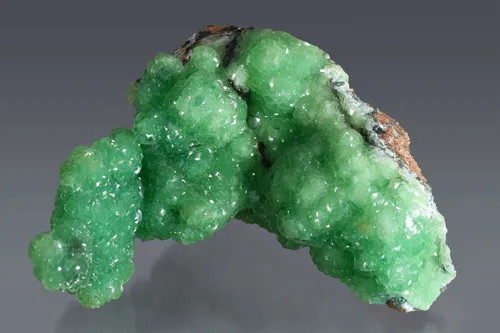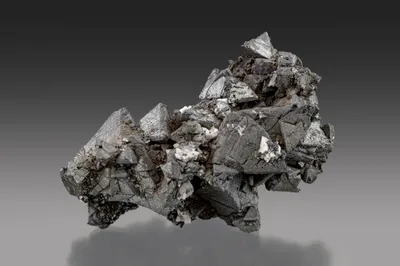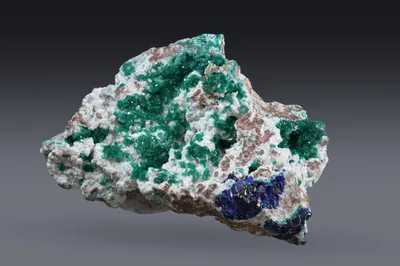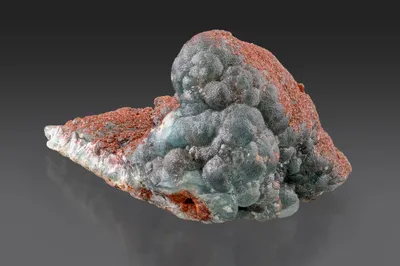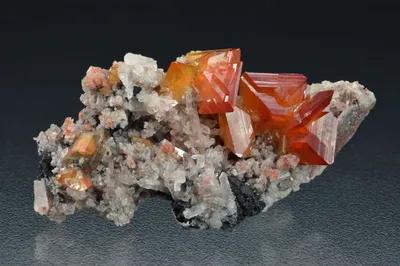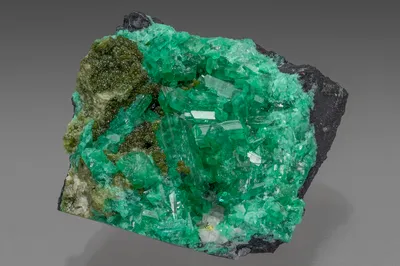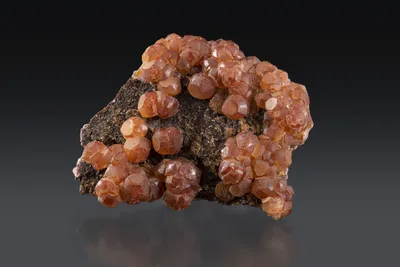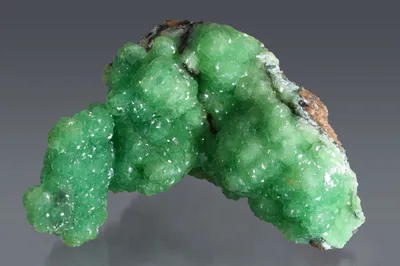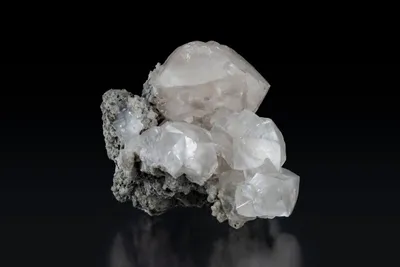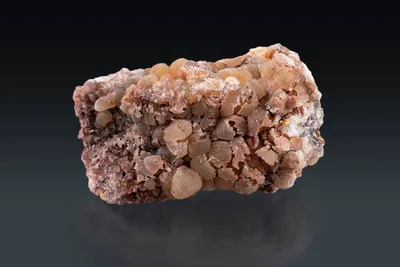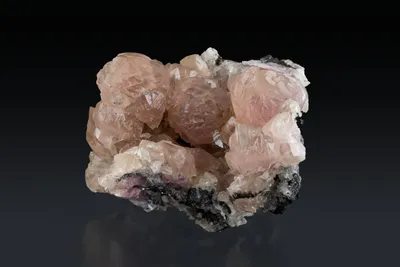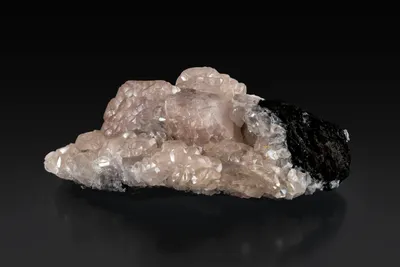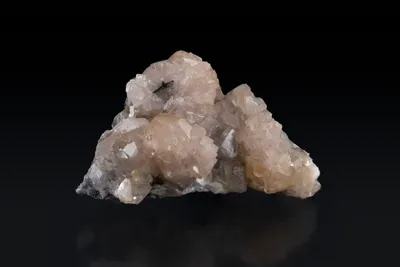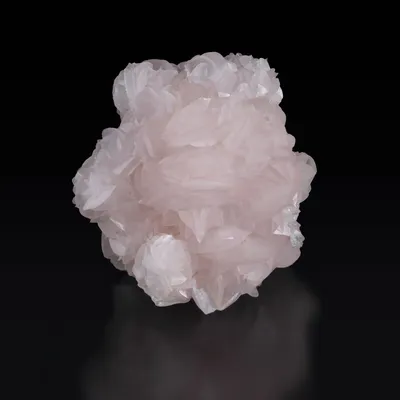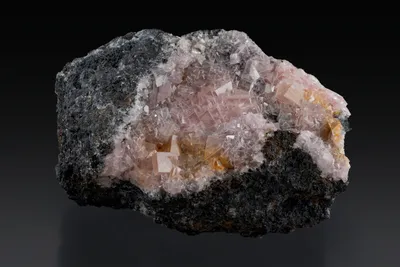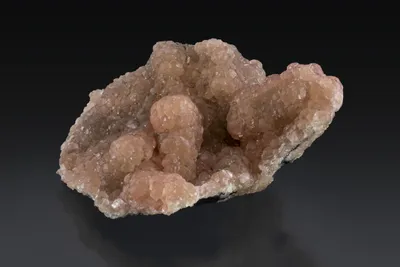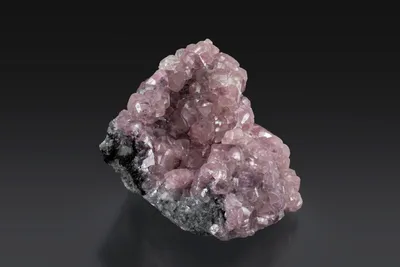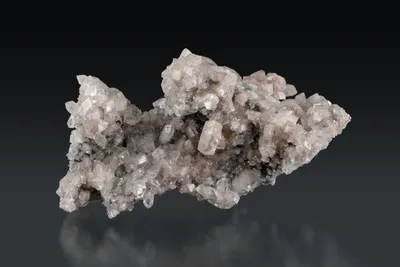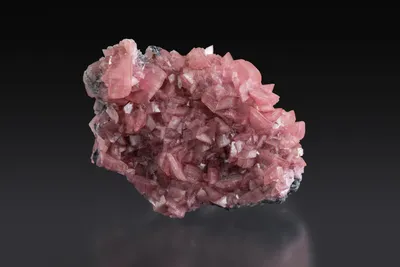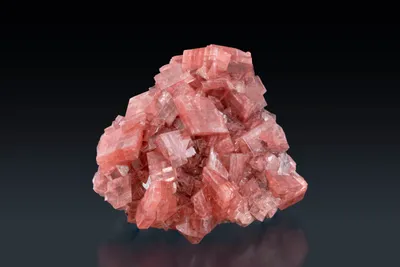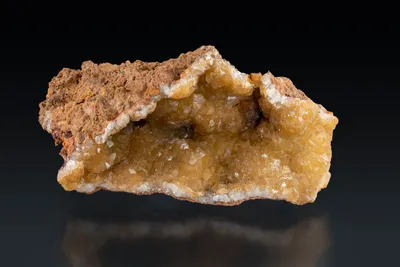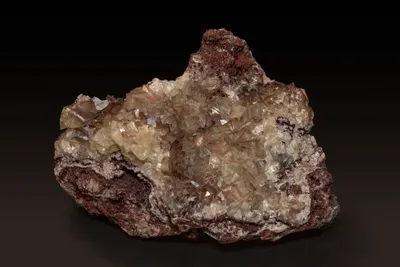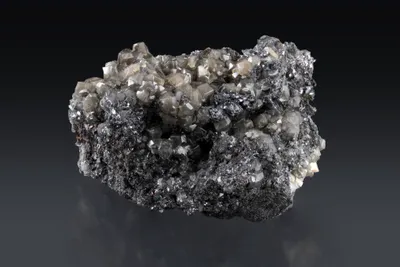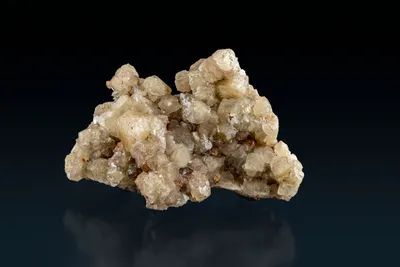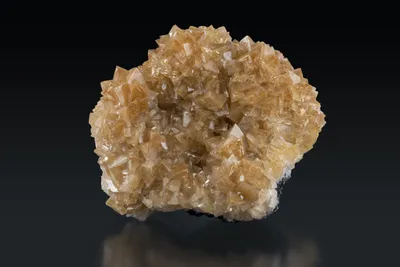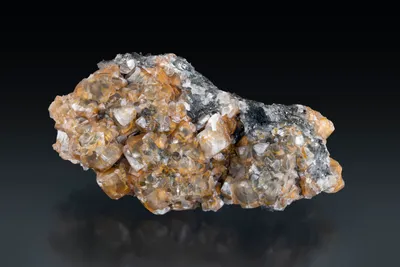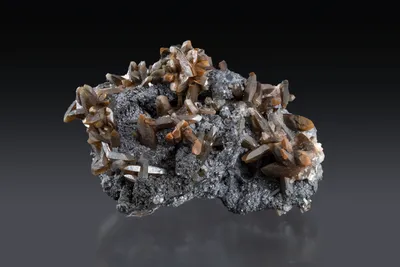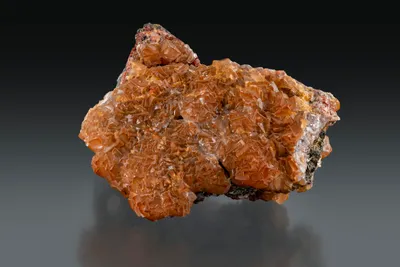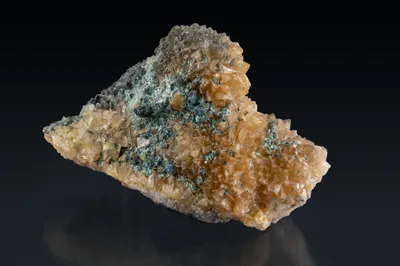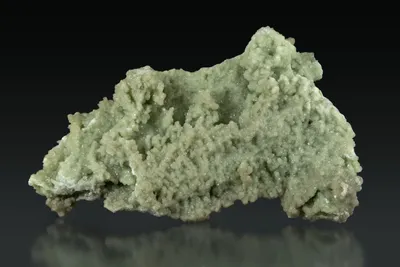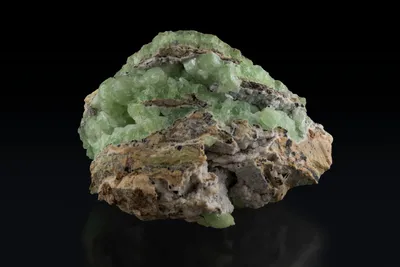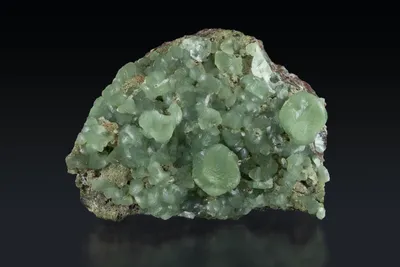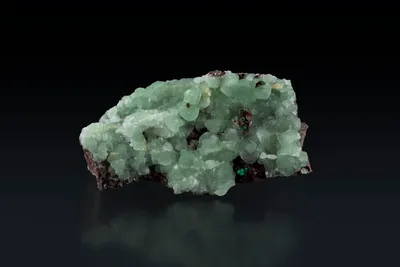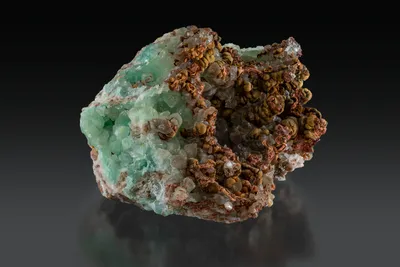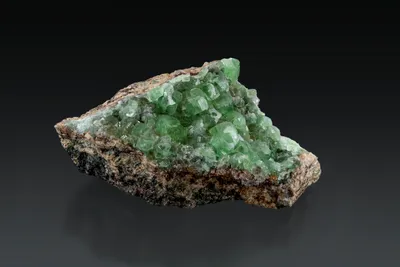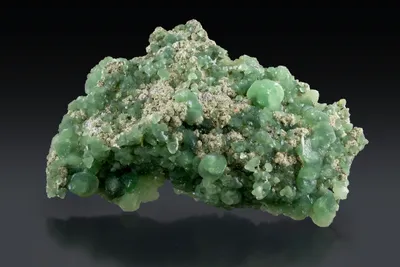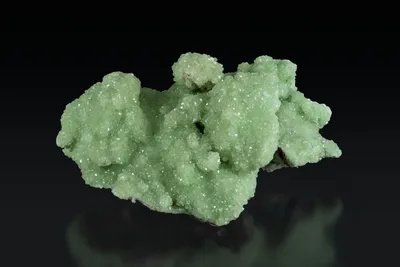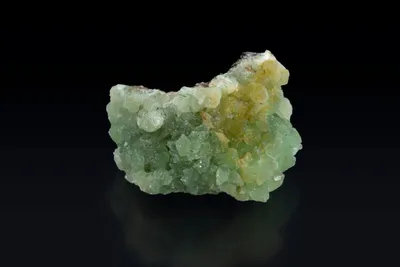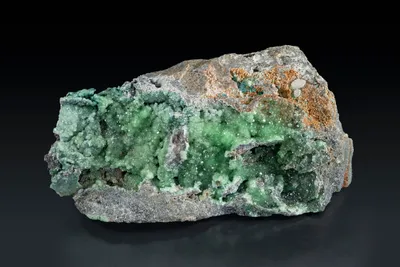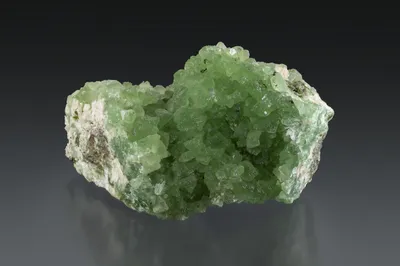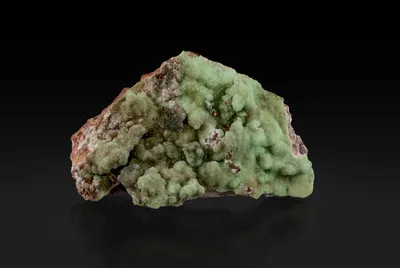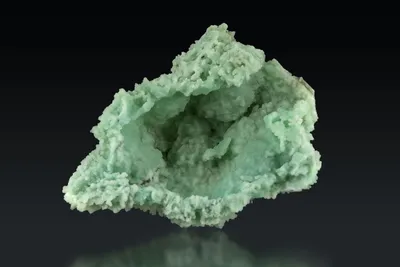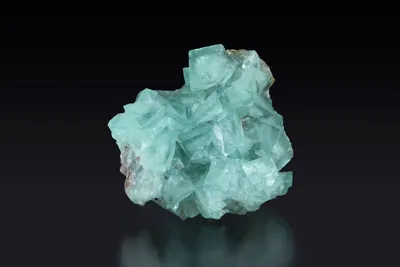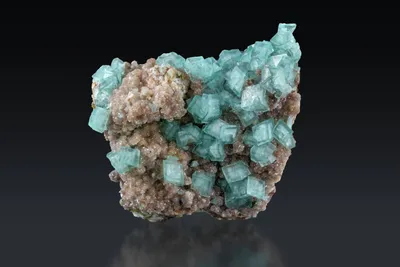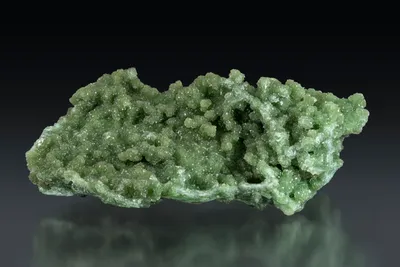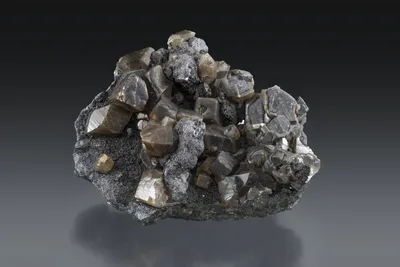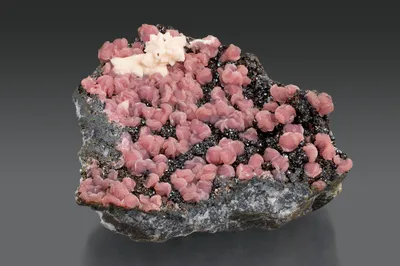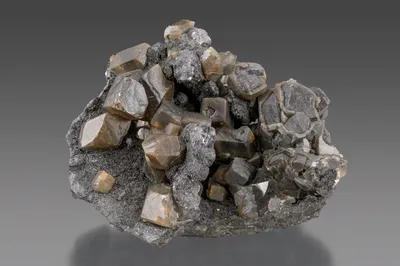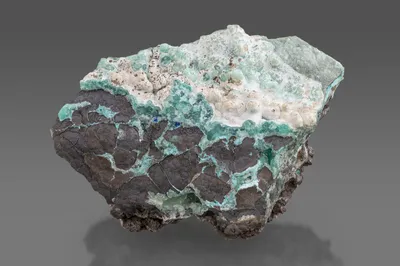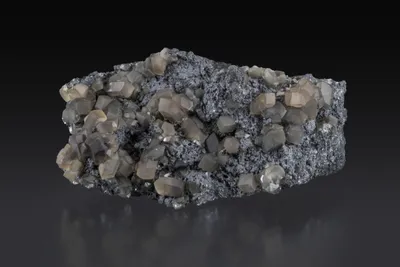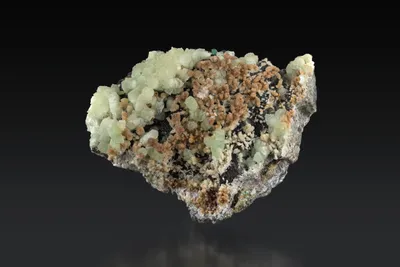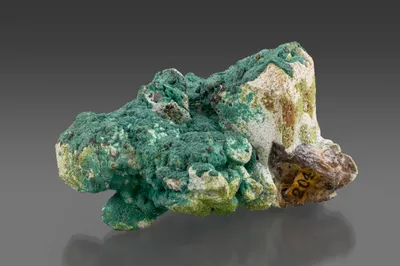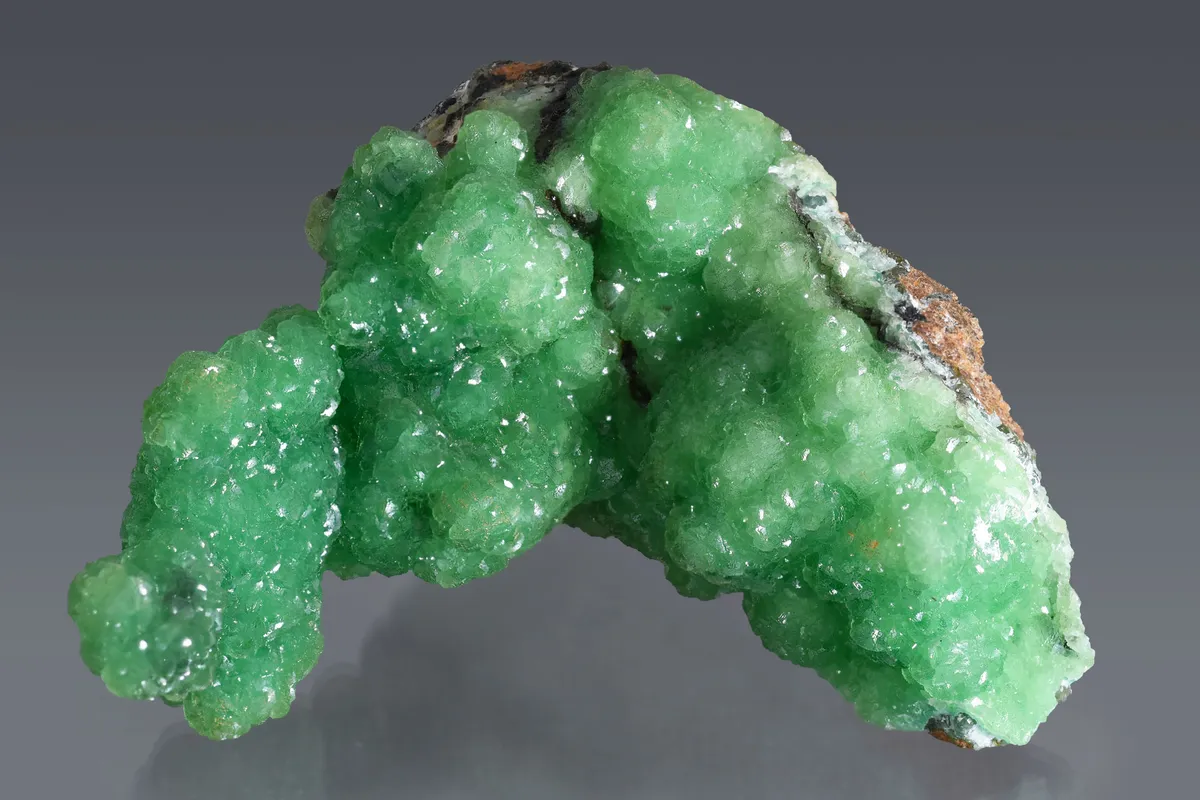
Image Credit: Malcolm Southwood
Mineral Species
Smithsonite
Type Locality
No
Composition
ZnCO3
Crystal System
Trigonal
Status at Tsumeb
Confirmed
Abundance
Very common
Distribution
First, second and third oxidation zones
Paragenesis
Supergene
Entry Number
Species; TSNB324
General Notes
Smithsonite was recognised at Tsumeb from the earliest years of mining (Schneider 1906) and, according to Keller (1977a), was the second most abundant secondary mineral (behind cerussite) in both the first and second oxidation zones. It is widely distributed at Tsumeb, present in all three oxidation zones and with a wide lateral footprint, occurring in cavities in the country rock well away from the locus of primary mineralisation, as well as in immediate contact with oxidising sulphides.
Maucher (1908) noted that smithsonite occurs most commonly as masses of granular material, sometimes riddled with red copper ore (= cuprite) and malachite. He commented that crusts of smithsonite are often green in colour and cavities in the smithsonite are sometimes lined with hydrozincite, siliceous zinc ore (presumably hemimorphite) and aurichalcite.
Smithsonite was sufficiently abundant in the upper levels of the mine that Klein (1938) considered it "…practically the only zinc mineral". He noted that it occurs in a wider variety of colours "… due to traces of other metals". He described the presence of smithsonite crusts and casts of zinkschale and observed scalenohedral and sheaf-like crystals between 140 m (5 Level) and 200 m deep (8 Level) and fine rhombohedral crystals between 140 m and 300 m (11 Level). His collection catalogue lists more than 140 smithsonite specimens ranging in depth from the open pit to 13 Level. The open pit and levels 6, 8, 9 and 11 account for the majority of the Klein specimens, most of which are described as green, grey or brown in colour (unpublished collection catalogue; Klein family archive).
Strunz et al. (1958a) first drew attention to the abundance of colourless, white, grey, salmon-pink and "violet-pink" smithsonites in the second oxidation zone and attributed the pink colours to the presence of cobalt or manganese. It is not clear whether the mention of cobalt and manganese was supported by analysis or simply an assumption based on the observed colours and the precedent of other authors such as Palache et al. (1951).
Strunz and Tennyson (1967) described smithsonite from the first oxidation zone as occurring in large masses, coarsely crystalline with both rhombohedral and scalenohedral crystals present and as crusts and schalen (= shells). Smithsonite in the first oxidation zone is white to grey, but mostly "splendid green" and occasionally pink. Moving to the second oxidation zone, they described smithsonite as common and "…very rich in forms [with] scaleno-rhombohedrons of varying steepness, mostly rounded." They observed that second oxidation zone smithsonite is typically colourless, white, grey or pink, the latter due to cobalt or manganese content.
Geier (1973/1974) commented on the abundance of smithsonite and noted that "… by adding coloured mineral components, especially copper, but also nickel, cobalt and manganese, an attractive range of colours is produced from off-white to yellowish, brownish, pink, dark pink … light to dark green, blue-green to nearly black." Geier appears to have been the first to mention nickel as a possible chromophore for Tsumeb smithsonite.
Bartelke (1976) observed that smithsonite occurs most commonly in massive form or as botryoidal or reniform crusts but that the abundance of well-formed crystals at Tsumeb, both rhombohedral and scalenohedral, and ranging in size to several centimetres is particularly notable.
Pinch and Wilson (1977) considered that:
"Smithsonite is the most abundant secondary mineral at Tsumeb. Large masses and botryoidal crusts are relatively common: crystals of rhombohedral to scalenohedral habit reach several cm in size and are the finest in the world. Relatively pure smithsonite is colourless to pale grey. Blackish crystals are filled with inclusions of sulphide."
They go on to describe four varieties based on colour:
- Cadmiumzinkspath: "The most obvious cadmium-rich smithsonite at Tsumeb is bright yellow, but this may be from inclusions of greenockite."
- Cobaltsmithsonite : "Forms pale pink to brilliant rose-coloured crystals in simple rhombohedrons and rarely other habits. The rhombohedral faces tend to bulge out slightly and are nearly always frosty."
- Herrerite (cuprosmithsonite): "Herrerite containing up to 3% CuCO3 has been observed. The crystals range from a frosty apple-green to a nearly adamantine emerald-green. One rare specimen is a brilliant turquoise-blue. Crystals commonly exceed 1 cm."
- Mangansmithsonite. "This variety is also pink although not as brilliantly pink as cobaltsmithsonite."
Key (1977) considered deep pink to light rose-coloured smithsonites the most desirable for collectors and suggested that high quality crystals in this colour range were only found once in the late 1960s. He noted that green smithsonite "… came in all shades. Early, upper level finds were almost never in distinct crystals; they are typified by oil-green, apple-green, and light emerald-green botryoidal masses…".
Keller (1977a) placed smithsonite in three of his proposed paragenetic sequences. Two of these are "Type I" assemblages, forming under near-neutral conditions with a pH range 6-8); the third is a "Type II" sequence, believed to have formed under acidic conditions:
I/2: (dundasite + smithsonite(i)) >> cerussite >> smithsonite(ii).
I/6: (willemite(i) + smithsonite(i)) >> (rosasite + duftite) OR mimetite >> willemite(ii) >> cerussite >> smithsonite(ii).
II/6: primary sulphides >> conichalcite >> tsumcorite >> adamite [zincolivenite] >> smithsonite
Keller (1977a) also noted that although smithsonite is a very common mineral it is typically found alone or with just one or two associated secondary species. Nevertheless, he recorded smithsonite in association with 28 other secondary minerals and noted that at least two generations of smithsonite are present. Based on a study of second oxidation zone associations he considered cerussite, duftite, mimetite and willemite to be very common associates of smithsonite, followed by rosasite (common), dundasite and dioptase (less common), adamite, calcite, cuprite, dolomite, goethite, malachite, conichalcite, mottramite, tsumcorite and quartz (rare) and arsentsumebite, anglesite, azurite, hematite, linarite, olivenite, serpierite, wulfenite (all very rare associates). Keller (1984) added hemimorphite and "adamite-olivenite" (= zincolivenite) to this list of associates.
Gebhard (1999) noted that specimens of smithsonite from the upper levels of the mine were less attractive than later (deeper) discoveries. Early specimens tend to feature brown, yellow and white rhombohedra but with crystals "… up to the enormous size of 6 cm." According to Gebhard platy aggregates of green and pink smithsonite, zinkschale, were found also found in the upper levels of the mine.
In the second oxidation zone, according to Gebhard (1999), attractive pink and green crystals with a satin lustre and a pseudo-cubic habit, sometimes resembling analcime were found during the 1970s.
From the third oxidation zone, superb red-pink rhombs (to 3 cm) were found from between 45 Level and 47 Level on a matrix of pyrite-tennantite-germanite ore. These smithsonites were associated with some of the best chalcocite crystals found at Tsumeb, but the only other secondary minerals present were malachite, mimetite and wulfenite (Gebhard 1999). Apple-green smithsonites (usually associated with the upper levels of the mine) were again encountered in the third oxidation zone.
Former TCL geologist Clive King recalls that classic pink "cobaltoan smithsonites" as very aesthetic groups of modified pink rhombohedra were recovered in considerable numbers from 28 Level in the second oxidation zone during the late 1970s (Clive King pers. comm. to M. Southwood, 2015).
Perhaps the best-known named occurrence of smithsonite, the so-called "Blue Pocket", was discovered in the mid- 1970s but its location in the mine was not recorded. It consists of sharp rhombs of blue-green smithsonite (typically to 9 mm) with a pronounced colour zoning, on a contrasting pinkish-grey matrix of sugary dolomite.
Associated Minerals
adamite; anglesite; aragonite; arsenohopeite; arsentsumebite; ashoverite (?); aurichalcite; azurite; baileychlore; baryte; bayldonite; berzelianite (?); beudantite; bornite; brunogeierite; calcite; cerussite; chalcocite; clausthalite; cobalttsumcorite (?); conichalcite; copper; cubanite (?); cuprite; devilline; dioptase; dolomite; duftite; dundasite; fraipontite; galena; gebhardite; goethite; greenockite; hedyphane; hematite; hemimorphite; hörnesite; hydrocerussite; hydrozincite; kintoreite (?); köttigite; lanarkite (?); legrandite; leiteite; ludlockite; malachite; mimetite; minrecordite; mottramite; munakataite; namuwite; ojuelaite; olivenite; otavite; paradamite; phosgenite; plumboselite; pyrite; quartz; reinerite; rosasite; schneiderhöhnite; serpierite; sidpietersite; skorpionite (?); stibioclaudetite; stottite; surite (?); tennantite-(Zn); tsumcorite; tsumebite; vanadinite; vaterite; willemite; wulfenite; zincite; zincolivenite
Pseudomorphs
Smithsonite is reported to form pseudomorphs after the following minerals: aragonite (rare); azurite (rare); calcite (rare); cerussite (rare); enargite (rare); wulfenite (rare, as epimorphs).
